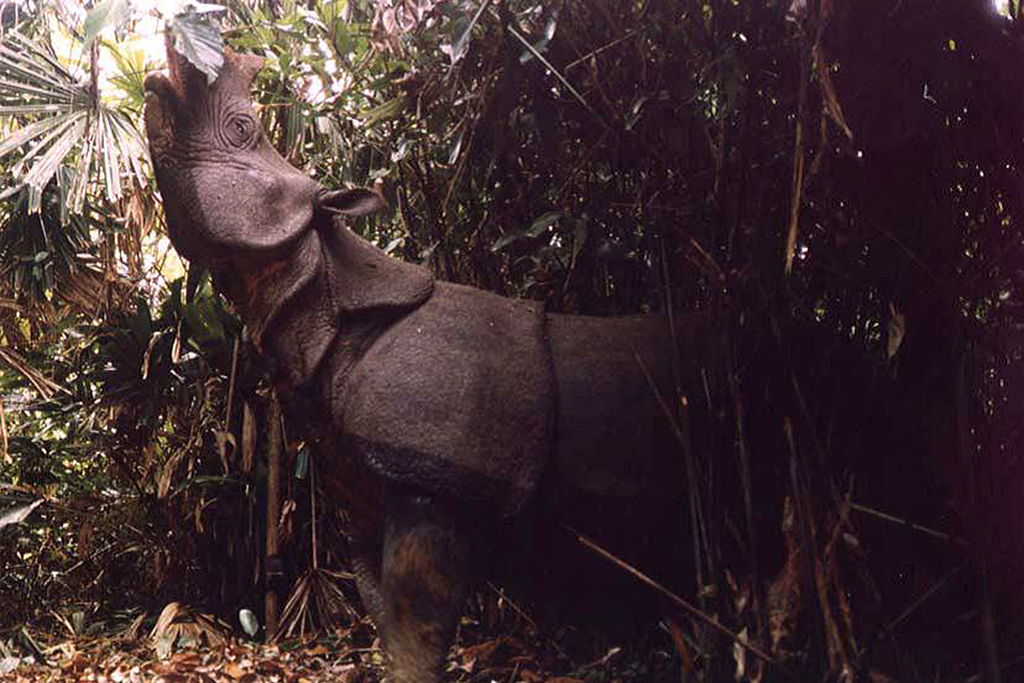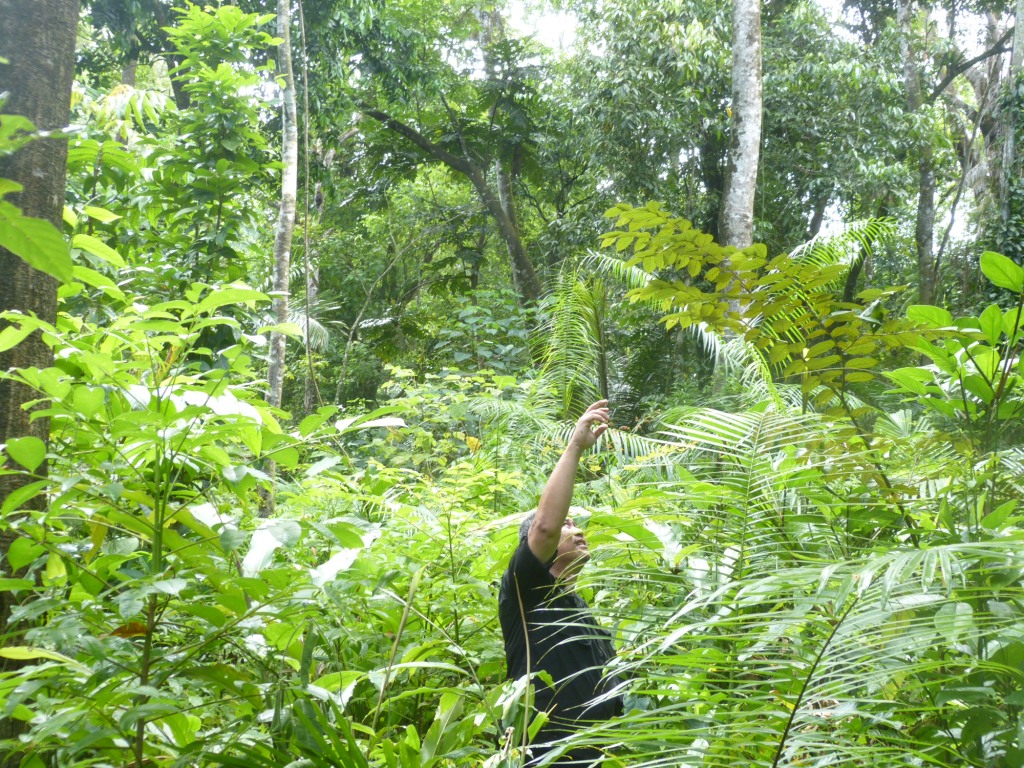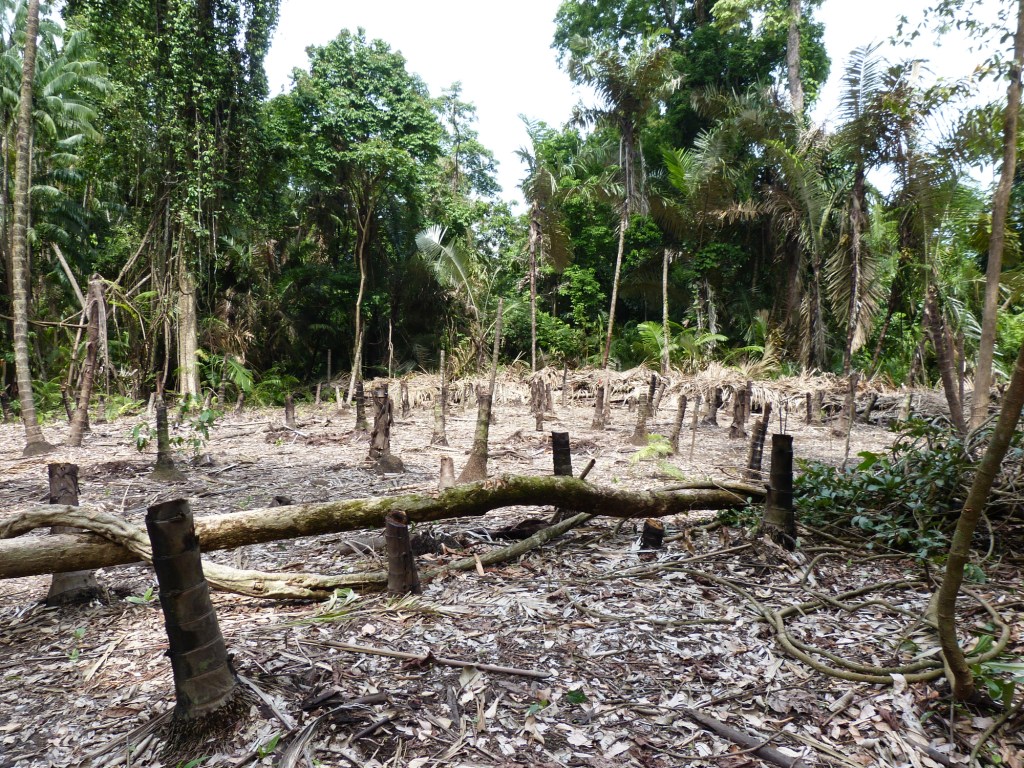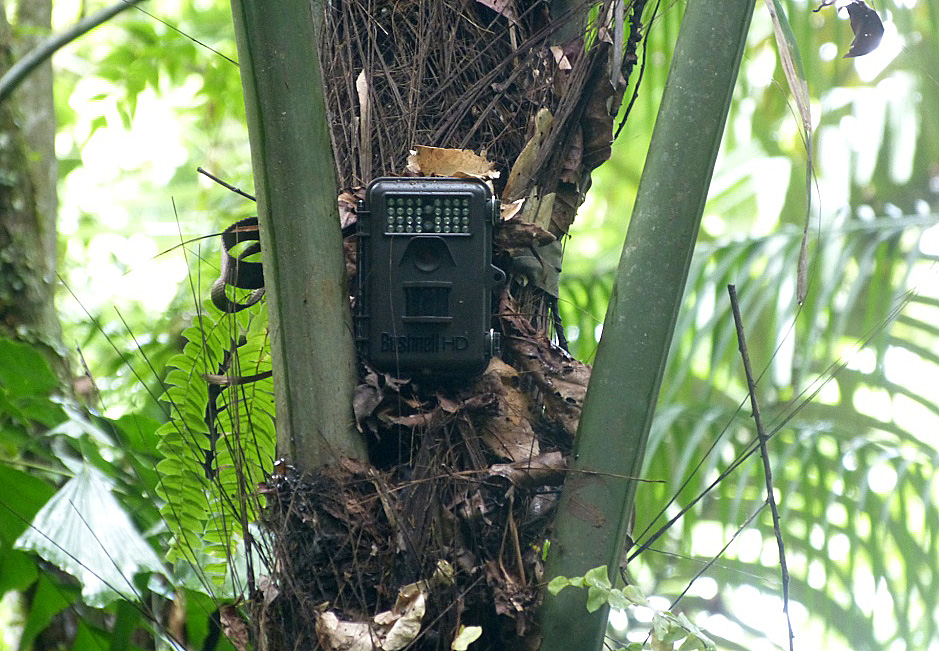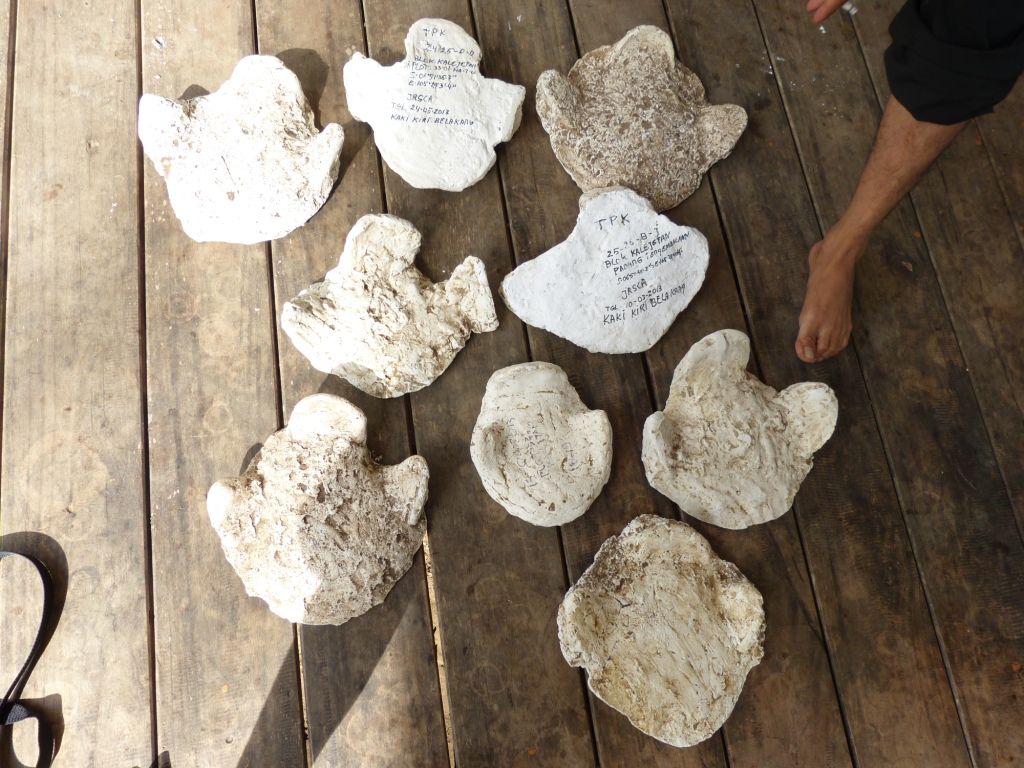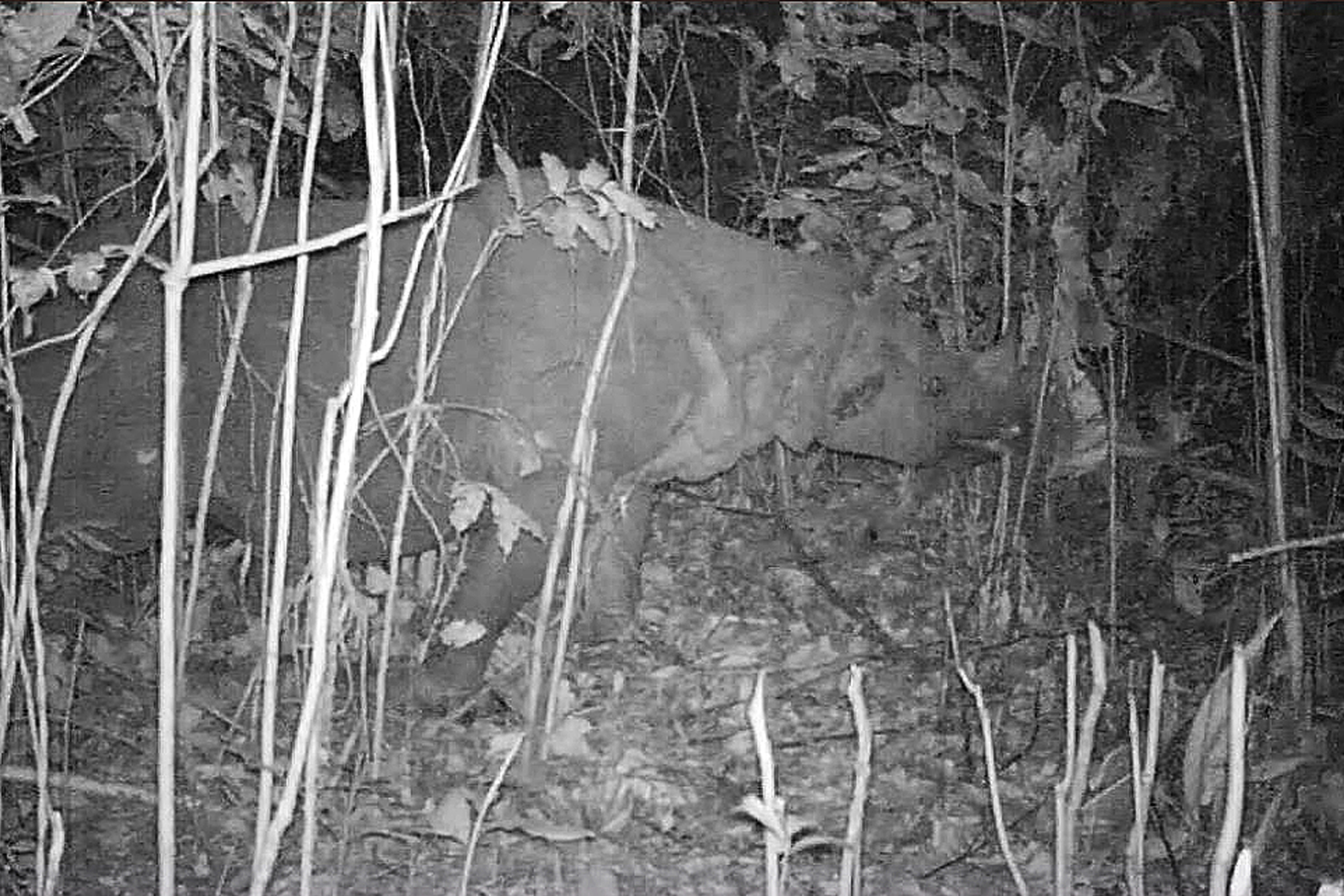A Brighter Future for Javan Rhinos?
Good news in the world of rhino conservation is hard to come by these days according to SOS Grantee, Bill Konstant, Program Officer with the International Rhino Foundation. But the results of recent field research in the tropical forests of Indonesia seem very encouraging he reports.
The population survey, which was launched in 2013 and included more than 100 video camera-traps strategically placed throughout the 763 square kilometers of tropical forest habitat in Ujung Kulon National Park, yielded an estimate of close to 60 Critically Endangered Javan Rhinos (Rhinoceros sondaicus) – a most welcome increase from a similar study that was undertaken only two years prior.
The previous research effort had produced an estimated range of 35-44 rhinos, but was based, however, upon images collected by only several dozen camera traps explains Bill. These cameras had been selectively placed in what was believed to be prime Javan Rhino habitat, and it now appears that a significant number of animals had gone undetected. The lower estimate hadn’t come as much of a surprise, as most experts believe the park’s population has hovered around a few dozen individual for decades.
While the Rhino Protection Units (RPUs) and park rangers that conduct daily patrols in Ujung Kulon rarely lay eyes on the elusive Javan Rhino, the burly animals are not shy about triggering the camera traps’ electronic sensors.
A robust collection of video images allows researchers to discriminate between individual rhinos based on such characteristics as body mass, genitalia, scars and the presence or absence of a horn – adult males have them while females don’t. The recent study tallied 33 different males and 25 females, including eight young animals. The sex ratio may be less than ideal, but the increase in confirmed population size is very encouraging nonetheless.
According to Bill, the new data begs some important questions including for example what is Ujung Kulon’s carrying capacity for Javan Rhinos? Secondly, to what extent can that number be increased through habitat restoration projects that focus on reclaiming land that has become dominated in recent decades by the invasive palm, Arenga obtusifolia?
Once carrying capacity is reached or exceeded, what options will there be for re-colonising former Javan Rhino habitats with the overflow from Ujung Kulon? The creation of the 4,000-hectare Javan Rhino Study and Conservation Area (JRSCA) on the national park’s eastern boundary should help answer these questions.
Already, the clearance of close to 80 hectares of Arenga palm within JRSCA has increased rhino “traffic” within the area by a factor of at least four, and 11 of the 12 species that replace the inedible palm appear high on the list of the Javan Rhino’s favorite food plants.
In addition, the increased rhino presence in JRSCA is likely to hasten the habituation process, allowing more people to observe this otherwise elusive species in its natural habitat. These developments help set the stage for the next chapter in this species’ remarkable conservation story and give us hope that by continuing to work together we can achieve great things.
About SOS
Protecting threatened species is critical because we are protecting parts of our life support system. Wildlife and nature supply is with so many basic necessities from food to fuel and shelter, but also inspiration in art, language and design to name but a few examples.
Right now we are protecting more than 200 species please contribute to SOS to help us continue to protect more of our natural heritage.
